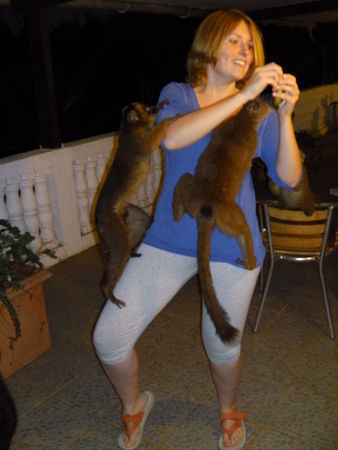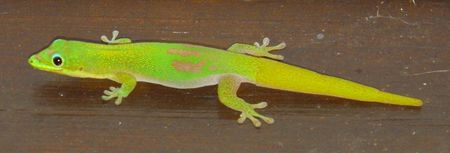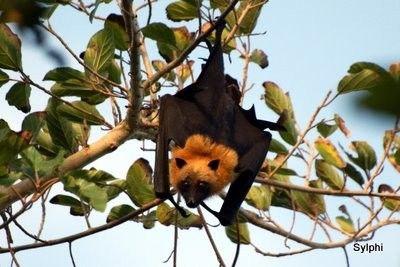Birds and Beasts
The first animals we saw upon getting out of the plane were zebus. Cow-like four-legged creatures with a bump on the back of their neck where they store water and fat for later. They stared at us, we stared at them and wondered where on earth we had ended up. There are plenty of those around. We regularly see them in the middle of towns, crossing roads on their own to get to the grassy roundabouts. They’ve often got a rope round their neck, but the end of said rope isn’t actually attached to anything and trails behind them, so you have to be careful not to run over the rope and trap the zebu. Sometimes, we see troops of them by the side of the road, accompanied by a guardian with a stick and dusty flip-flops.
Next came the makis, which we met while staying at a chambre d’hôtes before we got our flat set up. Makis are lemurs which don’t seem to have come from Madagascar as most do, as their Latin name is Lemurus fulgurus mayottensis. They’re lovely. They’re around in the late afternoon, they live in banana and coconut trees (so none where we live, but you can see them in the forests), they’re about the size of a cat with a long fuzzy tail. They make loud snorting noises and they’re mad about bananas. On this photo, I was feeding bananas to a couple of them. They go round in groups of about ten, snorting to each other and using their little hands to grab and peel bananas straight from the tree. They don’t smell very nice though.
We saw lots of little geckos at about the same point. Known as margouillats, they stick to the ceiling or to any source of heat. They eat mosquitoes and various insects, they’re actually very useful once you’ve got used to the “stuc, stuc, stuc” noise they make.
We still see plenty of bats. They’re day-time bats, no radar, about 1m to 1m50 wingspread and they’ve got little furry orange heads. P was scared to death of them at first, but he’s used to them now. They do tend to break out from the nearest tree and fly just over your head though. They’re an endangered species, with only about 900 still alive, because they’re hunted for sport and supposedly for food, though there can’t be much to eat on them once you take the wings off. They can live for about 25 years. They’re called Livingstone bats, nicknamed roussettes because of their orange heads. I didn’t take this photo, they’re not easy to photograph.





/http%3A%2F%2Fstorage.canalblog.com%2F46%2F39%2F886305%2F105228464_o.jpg)
/http%3A%2F%2Fstorage.canalblog.com%2F29%2F20%2F886305%2F104372181_o.png)
/http%3A%2F%2Fstorage.canalblog.com%2F43%2F08%2F886305%2F100957403_o.jpg)
/http%3A%2F%2Fstorage.canalblog.com%2F67%2F82%2F886305%2F99778585_o.jpg)
/https%3A%2F%2Fstorage.canalblog.com%2F34%2F27%2F886305%2F69902683_o.jpg)
/https%3A%2F%2Fstorage.canalblog.com%2F60%2F68%2F886305%2F69902677_o.jpg)
/https%3A%2F%2Fstorage.canalblog.com%2F88%2F49%2F886305%2F69902659_o.jpg)
/https%3A%2F%2Fstorage.canalblog.com%2F98%2F60%2F886305%2F69896713_o.jpg)
/https%3A%2F%2Fstorage.canalblog.com%2F53%2F34%2F886305%2F69883693_o.jpg)